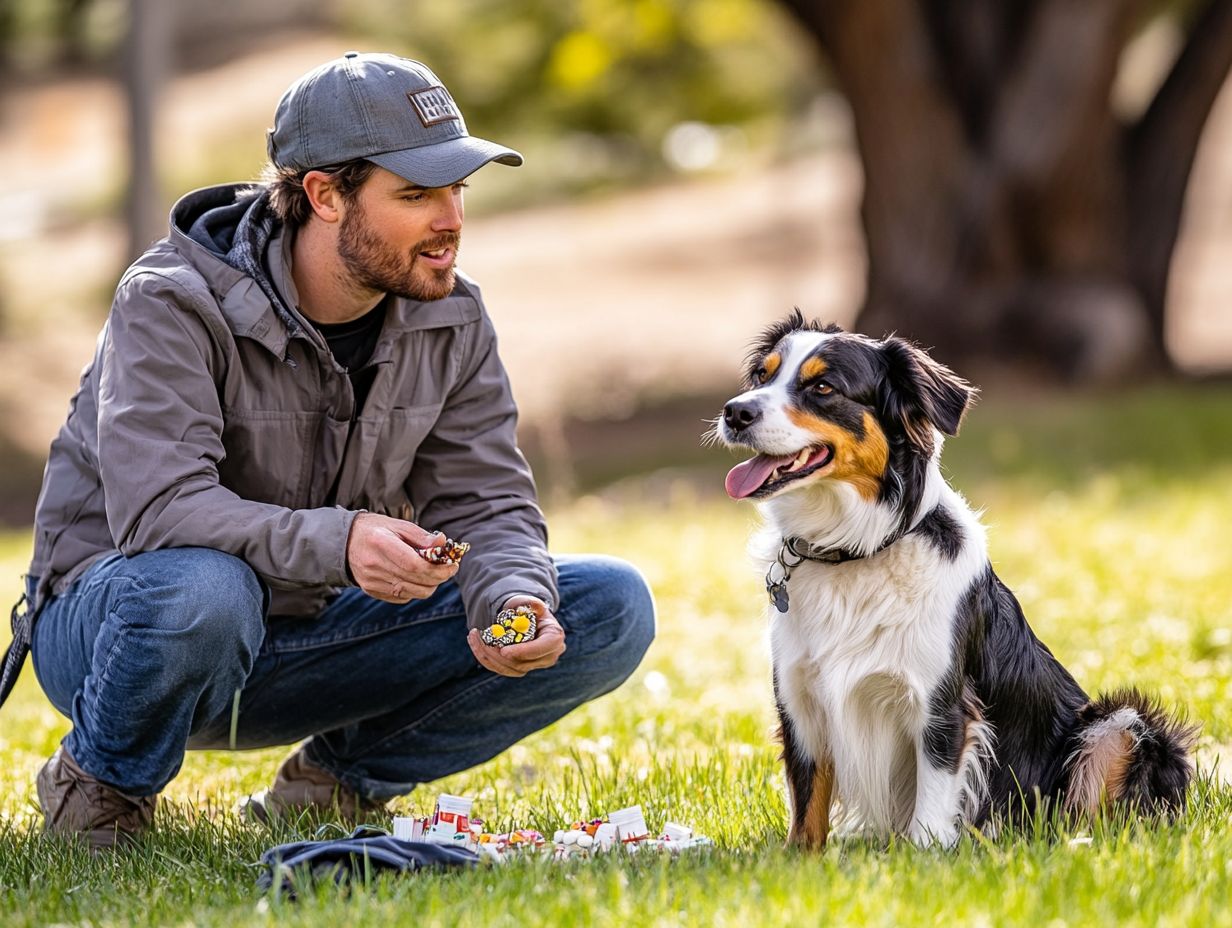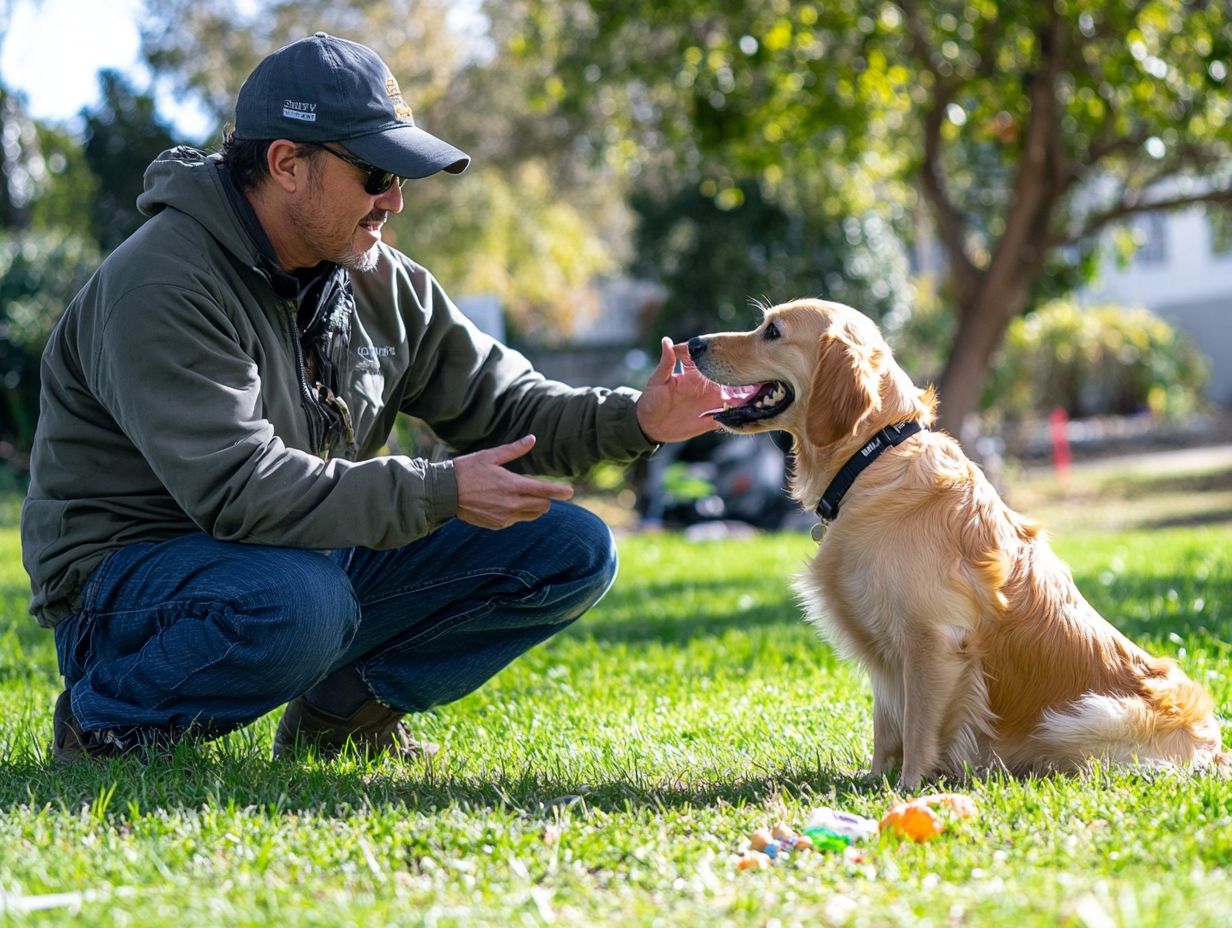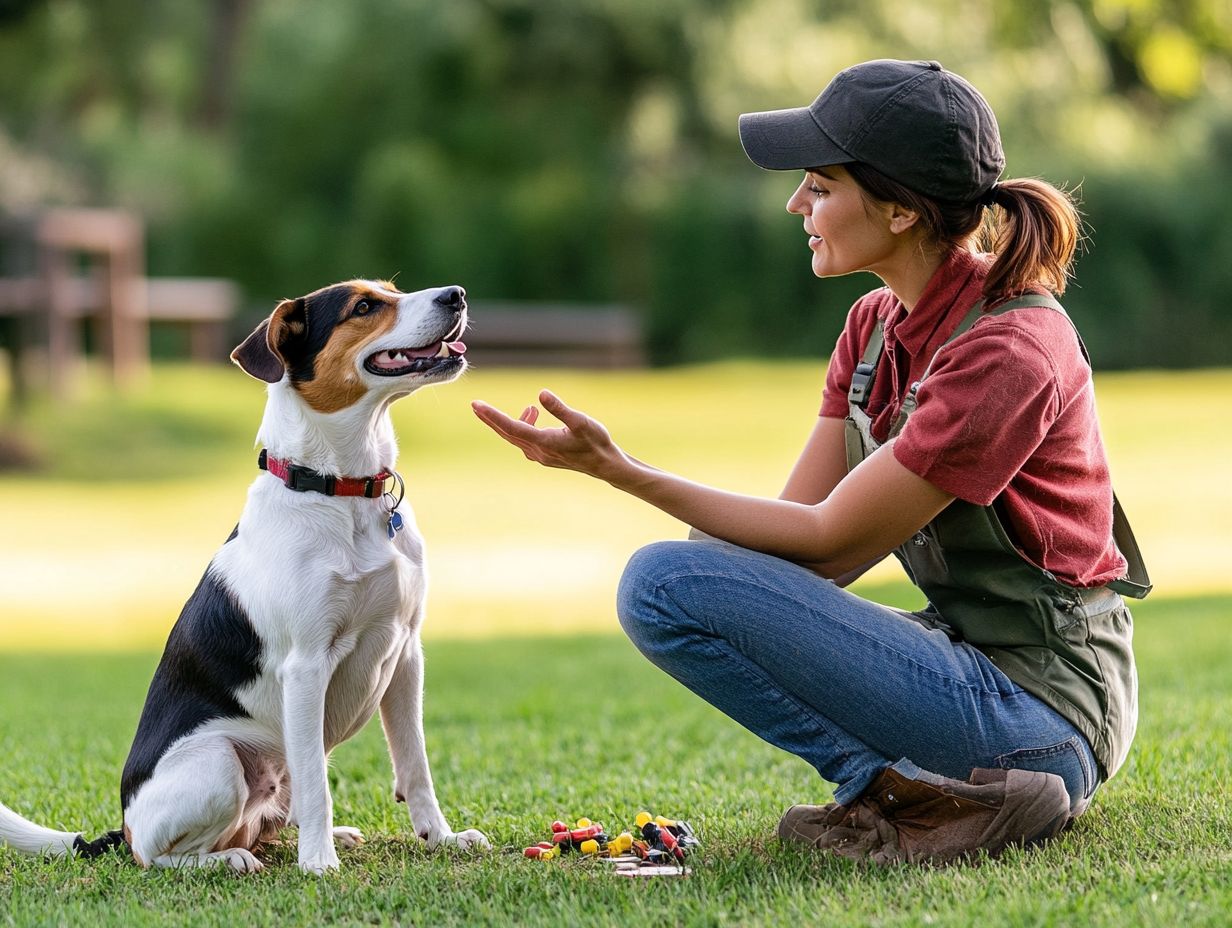Understanding Emotional Triggers in Pet Training
Understanding emotional triggers is essential for mastering the art of pet training. These triggers can profoundly influence your pet’s behavior and learning journey.
This article delves into what emotional triggers are and how they shape training outcomes. It highlights common triggers you might observe in your pet and presents effective strategies for managing these triggers.
Placing a strong emphasis on the power of positive reinforcement can cultivate a supportive training environment.
Elevate your training approach and enhance the bond you share with your furry companion!
Contents
- Key Takeaways:
- The Importance of Recognizing Emotional Triggers in Pet Training
- Common Emotional Triggers in Pet Training
- How to Manage Emotional Triggers in Pet Training
- The Role of Positive Reinforcement in Overcoming Emotional Triggers
- Frequently Asked Questions
- Understanding Emotional Triggers in Pet Training: What You Need to Know!
- How Understanding Emotional Triggers Can Improve Pet Training
- Examples of Emotional Triggers in Pet Training
- How to Identify Emotional Triggers in Your Pet
- Handling Emotional Triggers During Pet Training
- Can Emotional Triggers Be Overcome in Pet Training?
- Stress Management and Calming Techniques
Key Takeaways:

- Paying attention to emotional triggers is crucial in successful pet training, as they can significantly impact training outcomes.
- Identifying and addressing common emotional triggers in pet training can greatly improve the effectiveness of training techniques and strategies.
- The use of positive reinforcement is key in managing and overcoming emotional triggers in pet training, leading to positive behavior changes in pets.
The Importance of Recognizing Emotional Triggers in Pet Training
Recognizing emotional triggers in pet training is vital for dog owners. It helps cultivate a happy and confident companion who exhibits calm behavior.
Understanding these triggers can greatly enhance your dog s emotional well-being and improve the effectiveness of your training sessions. This involves being aware of canine body language and emotional responses.
By pinpointing the environmental stimuli that cause anxiety, you can create a personalized training plan that includes ways to change behavior, stress recovery strategies, and positive reinforcement methods.
As trainers like Lidy, Heston, Grisha Stewart, and Lili Chin emphasize, interpreting canine body language is essential for achieving successful training outcomes.
Impact on Training Success
The significance of recognizing emotional triggers for training success cannot be overstated. It directly impacts your dog s emotional regulation and overall ability to modify behavior.
By pinpointing specific situations or stimuli that elevate anxiety, you can customize your training approach to nurture a more supportive environment.
For example, if your dog becomes anxious around loud noises, failing to identify this trigger might lead to heightened stress responses. This can result in behaviors like excessive barking or even aggression.
By gaining a deeper understanding of these emotional cues, you can implement strategies that enhance impulse control. This promotes more balanced behavior in your dog.
This proactive approach not only alleviates stress but also strengthens the bond between you and your dog. It sets the stage for more effective training outcomes.
Common Emotional Triggers in Pet Training
In pet training, you’ll often encounter common emotional triggers that reveal themselves through reactions to environmental stimuli. For instance, barking responses and fear reactions can indicate deeper anxiety issues in dogs.
Spotting these signals is crucial for your dog’s growth and happiness.
Recognizing these signals is essential for effective training and fostering a confident, well-adjusted pet.
Start observing your pet today to improve training outcomes!
Identifying and Addressing Common Triggers

Identifying and addressing common emotional triggers in your dog is essential for effective training. This involves utilizing desensitization strategies and threshold management techniques.
Carefully observing how your dog reacts to various stimuli in their environment can help you map out potential triggers that might lead to emotional dysregulation.
Keeping a journal of these responses can be invaluable in pinpointing specific scenarios where negative behaviors tend to manifest. Practical approaches include gradually exposing your dog to a trigger at a low intensity while rewarding calm behavior. This promotes a sense of security for them.
Understanding your dog s emotional threshold is crucial. Knowing when they are approaching their limit allows you to intervene before an outburst occurs. This proactive management facilitates smoother training sessions and fosters a deeper bond between you and your dog, leading to more successful outcomes.
How to Manage Emotional Triggers in Pet Training
Effectively managing emotional triggers in pet training is crucial for fostering calm behavior and ensuring your dog s happiness. This endeavor requires a thoughtful blend of stress management techniques and behavioral modification strategies tailored to your pet s unique needs.
By honing these skills, you can create a more harmonious training environment for both you and your furry friend.
Effective Techniques and Strategies
You have a wealth of effective techniques and strategies at your disposal for managing emotional triggers in dog training. Consider incorporating attention games and flooding exposure to cultivate emotional intelligence in your canine.
Using diverse training methods can lead to remarkable improvements in your dog s ability to handle stress. For instance, employing desensitization tactics gradually exposes them to anxiety-provoking stimuli, fostering a more controlled response over time.
Engaging in regular play sessions serves as a delightful distraction and strengthens the bond between you and your dog. This paves the way for more successful future training endeavors.
Similarly, leveraging positive reinforcement techniques encourages desirable behaviors, ultimately leading to a more confident and self-assured canine.
By embracing these comprehensive approaches, you enhance your dog s emotional resilience and cultivate a more harmonious and effective training experience.
The Role of Positive Reinforcement in Overcoming Emotional Triggers
Positive reinforcement is essential for navigating emotional triggers effectively. By encouraging desired behaviors in your canine friend, you create a joyful environment that enables dogs to respond favorably to various stimuli. This fosters emotional regulation and positive experiences.
This approach boosts their behavior and strengthens the bond between you and your pet. Together, you create a harmonious atmosphere.
Using Positive Reinforcement to Change Behavior

Using positive reinforcement effectively can significantly transform your dog’s behavior. It enhances their social skills and helps them recognize calming signals while reducing anxious reactions.
This method involves rewarding desirable behaviors, like sitting calmly when a stranger approaches or responding promptly to your commands, with treats, praise, or playtime.
For example, during training sessions, if your dog displays relaxed body language instead of signs of stress, such as panting or pacing, immediately offer a reward to reinforce that calming behavior.
By consistently employing these methods, you’re helping your dog manage their impulses while boosting their emotional well-being. This fosters a sense of security and trust in their environment.
Over time, you ll likely see marked improvements in your dog’s overall behavior, making them more sociable and less reactive in various situations.
Frequently Asked Questions
Have questions about managing emotional triggers in your dog’s training? Feel free to ask or share your experiences below!
Understanding Emotional Triggers in Pet Training: What You Need to Know!
Emotional triggers are specific stimuli or situations that cause your pet to feel a certain way during training. These triggers can be positive or negative and may influence your pet’s behavior and ability to learn.
How Understanding Emotional Triggers Can Improve Pet Training
Understanding emotional triggers helps owners and trainers manage a pet’s feelings during training. This leads to better training results.
Examples of Emotional Triggers in Pet Training

Common emotional triggers in pet training include loud noises, unfamiliar environments, other animals or people, and previous negative experiences. Every pet has different triggers, which can also vary by breed or personality.
How to Identify Emotional Triggers in Your Pet
Pay attention to your pet’s behavior and body language during training sessions or other situations. If your pet becomes fearful, anxious, or aggressive in response to a certain stimulus, it is likely an emotional trigger. Consulting a professional trainer can also help identify these triggers.
Handling Emotional Triggers During Pet Training
Handle emotional triggers with care and empathy. Avoid forcing your pet to face their triggers or punishing them for their reactions. Instead, work with a professional trainer to gradually expose your pet to their triggers in a controlled and positive manner, building their confidence and trust.
Can Emotional Triggers Be Overcome in Pet Training?
Yes, with the right approach and training techniques, emotional triggers can be overcome in pet training. This may require a tailored plan to address your pet’s specific anxious triggers. Tackling emotional triggers quickly can lead to a happier, more confident pet.
Stress Management and Calming Techniques
Stress management means helping your pet feel safe. Calming techniques can include gentle training methods or relaxing activities. Every pet is different, and while results may vary, progress can be made through consistent application of these techniques.






